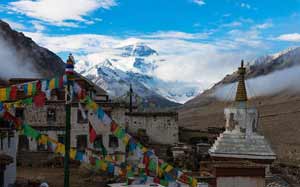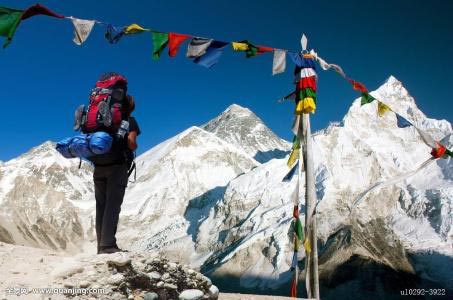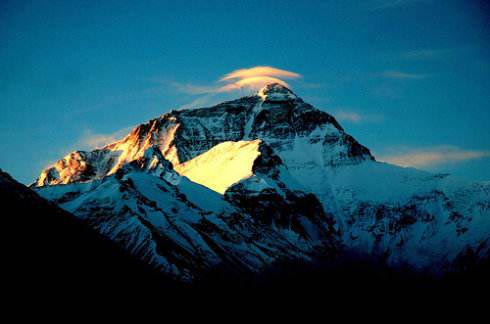Rongbuk Monastery is located in the Shigatse Region, southwest of the mysterious Tibet Autonomous Region, and to the north of the oblate Mt. Everest, the highest peak in the world. Seen from here, Mt. Everest appears like a lofty pyramid surrounded by mountains that touch the sky. On sunny days, a pile of thick clouds, just like a white flag floats lightly above the peak, which is known to be the miracle of 'The Highest Flag Cloud in the World'. Nowadays, with the golden travel boom to Mt. Everest, Rongbuk Monastery is gradually becoming a highlight for the tourists in its own right.
Rongbuk Monastery was built by a local lama in about 1899. The altitude is 5, 000 m. (16, 404.2 ft.) more or less, which is the highest among all the temples in the world. It is a five-tier building, but only 2 floors are in use now. In the frontispiece of the main hall, were sacrificed the statues of Sakyamuni and Geru Rinpoche. and the mural paintings inside are especially worthy of appreciation.
Monks and nuns live in the same monastery and celebrate the Buddhist festivals together. From 15th April of the Tibetan Calendar a Buddhist dancing ceremony is held here, which will last for three days. This is held to celebrate the birth of Sakyamuni, which is known as Saka Dawa Festival. During the play, many monks disguise themselves as Rabbis and dance many scenes one after another, and most scenes portray different characters and clothing. The noisy and special activity often attracts many local residents and visitors to the temple. Another Tibetan festival is held on 29th December of Tibetan Calendar to placate wandering ghosts, and monks wearing masks also perform this grand ceremony.
Walking forward from Rongbuk Monastery, you will see the famous Rongbuk Glacier Zone, which is the largest among all the hundreds of glaciers formed around the Mt. Everest. The three glaciers north of the Mt. Everest flow south and congregate at a river traversing the foot of the monastery. This is called 'Rongbuk River', and the water there is extremely cold.
|
|


 |








